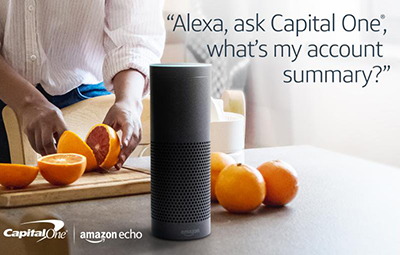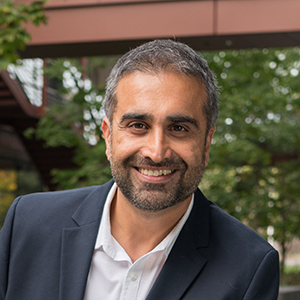Emotion AI Will Enhance Jobs, Not Replace Them

In breathless editorials, on television news programs, and on social media, there’s an increasing fervor over AI and its impact on the workforce.
And yes, AI is transforming how work is done, which in some cases eliminates jobs that are no longer necessary. But that’s been happening since the start of the industrial revolution. Economies evolve as technology advances, and right now, we’re on the cusp of exponential advancement that will greatly enhance existing jobs, create new ones, and help an increasing number of people move from checking tasks to actively engaging at their jobs.
Better Job Opportunities Made Possible By AI
Before looking at what AI can do for us, let’s define what it cannot do. There are large sectors of the workforce that simply cannot be replaced because they do things that machines cannot. Machines are limited in two primary ways. They cannot:
- Feel Emotion and Respond in Kind – While conversational AI and emotionally intelligent systems are being developed, they will never have the pure emotional response of a human being. Our studies of emotion as a science are fledgling at best, meaning machines have a long way to go before they can replace human-to-human
- Comprehend the Concept of the Unknown – AI is incredible. It can take in large volumes of data and then “learn” how to interpret and interact with But this is often done with finite tasks. Playing a game. Replying to a set number of static questions. Analyzing financial data. Because AI doesn’t have a concept for that which it does not know, humans must program it to work with a specific set of knowledge. Creative professionals trade in the unknown, creating new works from disparate concepts and experiences. The act of creation is a uniquely human trait and humans cannot replicate.
AI systems are effective tools that support human tasks to improve outcomes. And there are dozens of examples of how these systems are already doing just that in the classroom, hospital, board room, and middle-class living room.
Evolution in Education
 AI applications that can perceive emotions through voice have a huge role in Education. These systems discern patterns in student voice patterns and identify when they are struggling. Teachers can, in turn, adjust their lesson plans to better represent the subject matter for the class. Technology is enabling the realization of true mastery learning, an educational philosophy developed by Benjamin Bloom nearly 50 years ago that emphasizes the value of individualized instruction. Intelligent tutoring systems like Carnegie Technologies’ Mika provide real time feedback to students at the college level.
AI applications that can perceive emotions through voice have a huge role in Education. These systems discern patterns in student voice patterns and identify when they are struggling. Teachers can, in turn, adjust their lesson plans to better represent the subject matter for the class. Technology is enabling the realization of true mastery learning, an educational philosophy developed by Benjamin Bloom nearly 50 years ago that emphasizes the value of individualized instruction. Intelligent tutoring systems like Carnegie Technologies’ Mika provide real time feedback to students at the college level.
In addition to identifying common pain points among students, AI systems are being designed to help with test evaluations, gauge student learning styles, and provide proactive recommendations for improving lessons.
Textbooks are being developed that can adjust not only to student level, but to their preferred learning style, as is the case of Content Technologies Inc’s deep-learning based teaching tools.
Teachers can more quickly identify students who are struggling and intervene, or to provide a more substantial challenge for students who need it. AI is becoming an indispensable tool for educators, but for it to work, it still needs human input.
Improvements in the Healthcare System
One of the earliest industries to identify the potential value of AI is healthcare. In a 2016 CB Insights report, 86% of healthcare providers and technology vendors reported that they are using AI in some form. The expected average AI budget of these companies will be more than $50 million by 2020. These systems are assisting in a number of ways, including:
- Recurring manual tasks like managing medical records and other data
- Repetitive medical tasks including test analysis, CT scans, X-Rays, and cardiology tasks that currently require huge amounts of human hours
- Designing Treatment using the wealth of medical knowledge already at our fingertips
- Virtual healthcare from apps and services like Babylon or Molly
- Analysis of healthcare system performance and opportunities for improvement
- Patient voice monitoring both before and during procedures to provide better care
Physicians, who spend an estimated 50% of their time on paperwork can leverage voice-systems to shift resources and spend more time with patients. Data on patient anxiety and stress, voice systems that can take notes and organize physician input, and more greatly help in streamlining the process.
Commercial Collaborations with Conversational AI
 Consumers are increasingly comfortable with voice interfaces. With more than one billion voice assistant devices on the market and the installation base for smart speakers over 57 million through 2018, most people are comfortable talking to their car or an ATM. There are several unique ways voice is being implemented in these systems. In fact, customer service is one of the areas in which AI will never truly be able to replace employees, but it can absolutely help.
Consumers are increasingly comfortable with voice interfaces. With more than one billion voice assistant devices on the market and the installation base for smart speakers over 57 million through 2018, most people are comfortable talking to their car or an ATM. There are several unique ways voice is being implemented in these systems. In fact, customer service is one of the areas in which AI will never truly be able to replace employees, but it can absolutely help.
AI is being implemented by Capital One to help their customers make payments and check balances from Alexa-enabled devices. Allstate built an AI system that provides real-time support to its agents when dealing with customers. IBM’s customer-focused AI is powered by Watson and is being repurposed and implemented across different organizations to face unique challenges.
The common denominator is that these systems rarely replace human operators. They augment their efforts. They provide insights about customers, intervene when situations escalate, and allow human operators to spend less time on simple inquiries and more time helping those who need it most.
AI is at the Forefront of Job Creation
Automation is having a distinct impact on the economy, but while short term challenges are understandably difficult to tackle, long term opportunities are abundant. AI will never truly replace human workers. It isn’t designed to do so.
What we are far more likely to see as technology evolves is the creation of new jobs as companies become more efficient and have more resources with which to grow their operations. For example, a recent ManpowerGroup report forecasts that as many as 87% of employers will increase or maintain their workforce because of automation.
What this means is that the jobs available will likely change. Much as the jobs of the 18th century started to disappear after the birth of the factory, we’re seeing the shift of manual laborers into information workers – people whose role is to interact with, interpret and help develop customer relationships in new ways. People will become less task-oriented – fewer cogs in a machine, and more results-oriented. They will use the advanced tools provided to them by these AI systems to be more creative, more productive, and ultimately more fulfilled in the work they do each day.
 About the Author: Rana Gujral is an entrepreneur, speaker, investor and the CEO of Behavioral Signals, an enterprise software company that delivers a robust and fast evolving emotion AI engine that introduces emotional intelligence into speech recognition technology. Rana has been awarded the ‘Entrepreneur of the Month’ by CIO Magazine and the ‘US China Pioneer’ Award by IEIE, he has been listed among Top 10 Entrepreneurs to follow in 2017 by Huffington Post.
About the Author: Rana Gujral is an entrepreneur, speaker, investor and the CEO of Behavioral Signals, an enterprise software company that delivers a robust and fast evolving emotion AI engine that introduces emotional intelligence into speech recognition technology. Rana has been awarded the ‘Entrepreneur of the Month’ by CIO Magazine and the ‘US China Pioneer’ Award by IEIE, he has been listed among Top 10 Entrepreneurs to follow in 2017 by Huffington Post.








